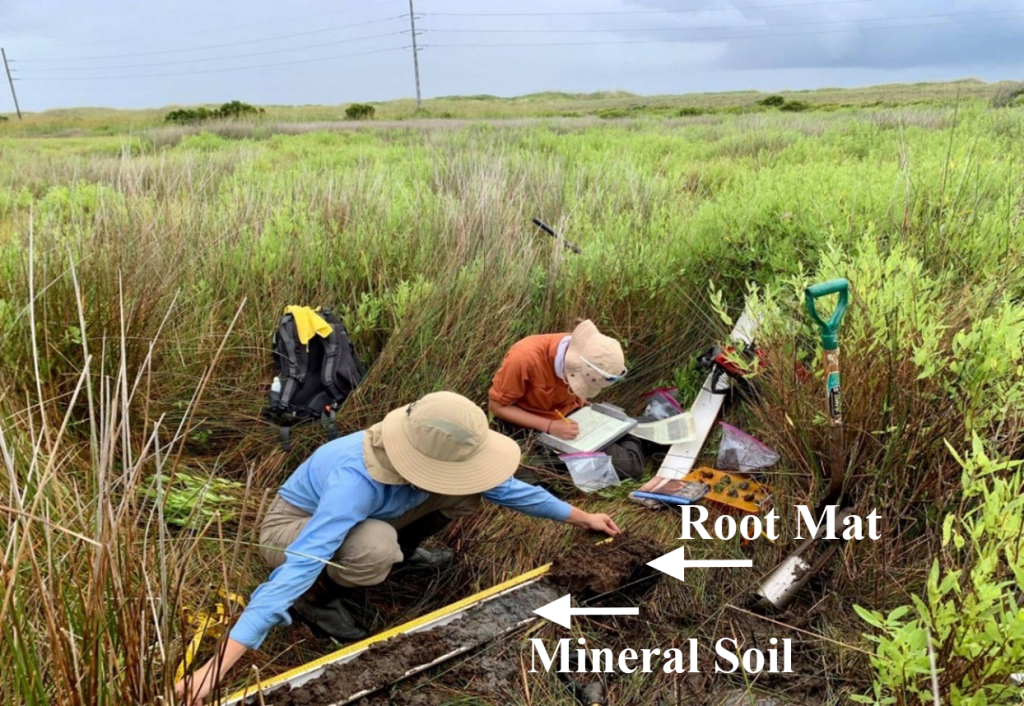“Blue carbon” is a term for carbon captured by the world’s oceans and coastal ecosystems. Mangrove forests, tidal marshes, and seagrass beds are the main vegetated coastal areas that store vast amounts of blue carbon. It’s not really blue – it’s named after the color of the ocean. But blue carbon is an important tool in reducing the effects of climate change.
What is carbon and why should we care about “sequestering” or storing it? Carbon moves through a cycle on the Earth. It is exchanged between the atmosphere, oceans, and land surface in different forms. Carbon dioxide (CO2) in the atmosphere is used by plants for their metabolism. Plants then store the carbon in various forms of carbohydrates and proteins. When they decompose, the carbon is released back into the atmosphere, creating a carbon cycle.

Terrestrial forests have long been recognized for their role in the carbon cycle. Despite their small global extent, blue carbon ecosystems store much larger quantities of carbon per unit area compared to upland forests!
Blue carbon ecosystems are highly productive in storing carbon. They capture and store carbon in their living, above-ground biomass (stems, leaves, and branches), like an upland forest. It’s what goes on below the surface that makes coastal ecosystems more efficient at carbon storage than their terrestrial counterparts.
In a terrestrial forest, the plant litter on the ground is exposed to air and decomposes like typical plant litter. In oceans and coastal ecosystems, the soil is often under water all the time, or exposed to continuous tidal wetting. These soils are deficient in oxygen, which is needed to decompose the plant litter.

So, plant litter in blue carbon ecosystems doesn’t decompose as fast as its terrestrial counterparts. Without oxygen, the soil microorganisms responsible for the breakdown of organic matter are not able to work as efficiently. This allows carbon to build up and be locked away in the soils over longer periods of time – making them great at carbon storage.
Between half and 99% of the blue carbon stored within mangrove forests, tidal marshes, and seagrass beds, is located belowground in the soils and sediments. If undisturbed, these areas act as long-term carbon sinks. Here carbon can be sequestrated for millennia!
Blue carbon ecosystems are also influenced by ocean tides and currents (i.e., “blue” comes from the color of the ocean), which can carry organic carbon from outside sources into the ecosystem to be buried and stored.
In addition to their valuable role in the global carbon cycle, blue carbon ecosystems provide many additional ecosystem services. These include flood and storm surge protection as well as filtration of pollutants and sediments. They are an essential habitat that supports biodiversity and fisheries. Despite this, they are among the most threatened ecosystems in the world.

We have already lost one-third of mangrove, tidal marsh, and seagrass areas over the past several decades to dredging, filling, development, and pollution. In addition, climate change and associated sea level rise has the potential to flood and erode tidal marshes and mangrove forests. When these ecosystems are damaged or eroded, the carbon that was once stored is released back into the carbon cycle, where it can enter the atmosphere as CO2. Because of this, it’s important to restore and protect these ecosystems so they may continue to store blue carbon and act as a carbon “sink.”
If you are wondering how much blue carbon is stored in these coastal areas, the Natural Resource Conservation Service (NRCS) Coastal Zone Soil Survey Focus Team (CZSS) is one group working to determine just that. Movng forward, as we address climate change and its effects, knowledge of blue carbon will be essential.
Answered by Lori Gorczynski, North Carolina State University
To receive notices about future blogs, be sure to subscribe to Soils Matter by clicking on the Follow button on the upper right! Explore more on our webpage About Soils. There you will find more information about Soil Basics, Community Gardens, Green Infrastructure, Green Roofs, Soil Contaminants, materials for Teachers and more.

Informative Blog